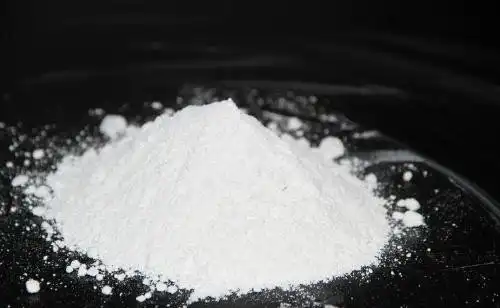Hebei Messi Biology Co., Ltd. stated that magnesium oxide tablets are used in many aspects such as pharmaceutical laxatives and mineral supplements. Generally speaking, tablets are manufactured by compressing raw materials into tablet shapes. And the process of performing this compression molding is called the tableting process. In the tableting process, the compression operation is performed continuously and at high speed. Under such conditions, stress and density are dispersed inside the tablet, so that the internal structure will never be uniform. This unevenness is considered to be the main cause of tableting problems and abnormal quality characteristics.
As the tableting problems, there are top cracking, waist cracking, sticking, and adhesion. Top cracking is the phenomenon that the tablet cap-shaped peels off during or after the tablet is discharged from the die ring after the tablet is formed. Waist cracking and top cracking become more serious, and the tablet peels off in layers along the side rather than the upper surface. Sticking is the phenomenon that the powder adheres to the punch (compression rod) during the compression stroke and causes damage in a way that the tablet surface is concave. Flakes are also the phenomenon that the tablet surface is slightly damaged for the same reason. These tableting problems are mainly caused by the nature of the raw materials. In addition, as the above-mentioned abnormal quality characteristics, there can be cited the state that the tablets are cracked, defective or powdered even under normal use conditions. Such abnormal quality characteristics are mainly caused by insufficient strength (hardness) of the tablets.

In the manufacture of magnesium oxide tablets, especially when high-purity magnesium oxide is used as the raw material, there is also the problem that the above-mentioned tableting problem and abnormal quality characteristics are easy to occur. However, in the manufacturing method of magnesium oxide, there is a method of calcining magnesium carbonate, and a method of adding ammonium carbonate to seawater or magnesium chloride aqueous solution to generate magnesium hydroxide and filtering and drying it before calcining.
For the above-mentioned magnesium oxide produced by calcining magnesium hydroxide, its properties and uses vary depending on its calcining temperature. For example, the product after calcining magnesium hydroxide at a high temperature of more than 1500°C has almost no activity, has high-temperature refractory performance, and is used as a refractory material as a raw material for basic refractory bricks and amorphous refractory materials.
In addition, magnesium oxide obtained by calcining magnesium hydroxide at 450-1300°C is relatively active and is used as a supplement or mineral supply source for beverages, food additives, antacids, laxatives and other pharmaceutical raw materials. This magnesium oxide is used as a nutrient, food additive, pharmaceutical raw material for direct or indirect ingestion by the human body, or as a cosmetic raw material for contact with the human body, so it is hoped that the amount of heavy metals mixed in or the content is small and the purity is high.
Therefore, Hebei Messi Biology Co., Ltd. has developed a magnesium oxide particle that can be used as a pharmaceutical or food additive, which can reduce many problems during tableting.
